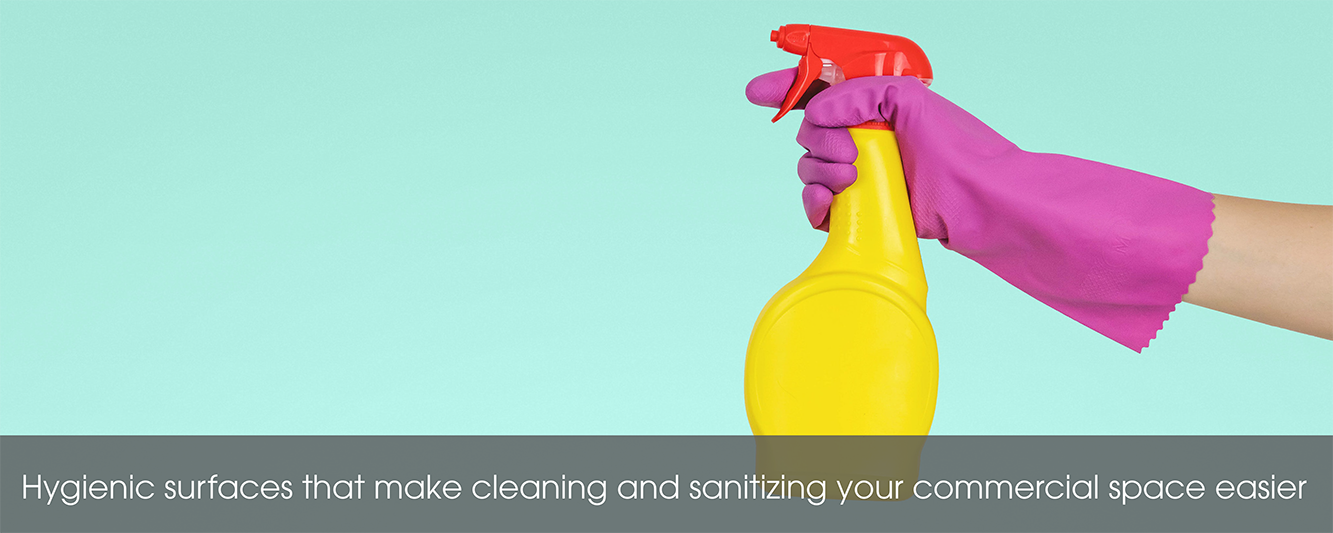
Can't see the region you're looking for? You can find a list of our global locations here

Commercial businesses have a great responsibility to provide a safe and hygienic space for both customers and employees. After all, even a vague appearance of dirt, dust, or grime in a commercial space can completely undermine the trust of customers and staff, posing a huge risk to customer satisfaction, comfort, experience, and overall ratings. From a business standpoint, this dissatisfaction can cost a commercial business a lot. The bottom line is that cleanliness and effective sanitation procedures should be a top concern for business owners who intend on experiencing long-term success.
And while regular cleaning is always necessary, property owners can get ahead of the work by integrating smart designs into the building’s design, making it easier (and faster!) to keep the commercial space clean. Take a look at just a few of the ways that smart interior design choices can help save business owners time and money on keeping the commercial area clean.
Installing flooring that can be easily swept, sprayed, and mopped clean is an easy way to get ahead of the workload. Smooth surfaces, like vinyl flooring, are especially beneficial in public areas that see regular foot traffic requiring routine cleanings, such as restaurants, cafes, barbershops, spas, and any commercial spaces with customer restrooms. Surfaces with ridges or paneling can be difficult to clean thoroughly, as crevices and gaps can harbor hard-to-reach grime that builds up over time.
Similar to the reasoning behind installing smooth flooring, smooth walls are a smart choice for commercial spaces. Smooth walls can be disinfected and wiped clean much faster than textured wall surfaces, like board and batten paneling, stucco, or mosaic tiling — all of which can create little gaps and crevices for dirt, dust, grime, and mold to collect. Smooth walls simply cut down the cleaning time required for employees to keep the space squeaky clean.
The floors and walls aren’t the only aspects of interior design that can benefit from streamlined decor choices. Handrails, light switches, doorknobs, armrests, and table edges are all high-contact surfaces, which will need regular cleaning. Choosing simple, curved designs over intricate designs with beveled edges can cut down on cleaning time and allow for a more efficient clean. This may require the interior design concept to adopt a more modern aesthetic, but the choice will certainly pay off in the long run when it comes to cleaning costs and effort.
Boosting visibility across surfaces and decor can allow employees to identify when certain areas need special attention and a deep cleaning. Therefore, light colors, like cream, white, and beige, are often more adapted for commercial spaces than dark colors, which can hide dirt, spills, stains, and smudges much easier. Boosting visibility is also relevant when selecting materials. For example, glass is preferential to dark fabric, which is more difficult to see and clean.
Finally, it can be beneficial to pay extra attention to airflow entry and exit points in commercial spaces. Vents, windows, and fans are all great at collecting dust, which can quickly build up and become an eyesore, not to mention compromising air quality and ventilation. Commit to a deep cleaning of these areas at least once per season, such as when sealing windows for the winter or cleaning the air ducts in the spring, in addition to the strategic placement of vents and airflow ports during the commercial building design process.
With intentional design, routine cleaning can be faster and more efficient for commercial spaces.
Skylar Ross is a contributor to the Innovative Materials blog. He is a content writer for the construction and home improvement industries with an interest in landscaping, outdoor remodeling, and interior design. Skylar is focused on educating homeowners, contractors, and architects on innovative materials and methods of construction that increase property value, improve sustainability, and create a warm and welcoming ambiance.